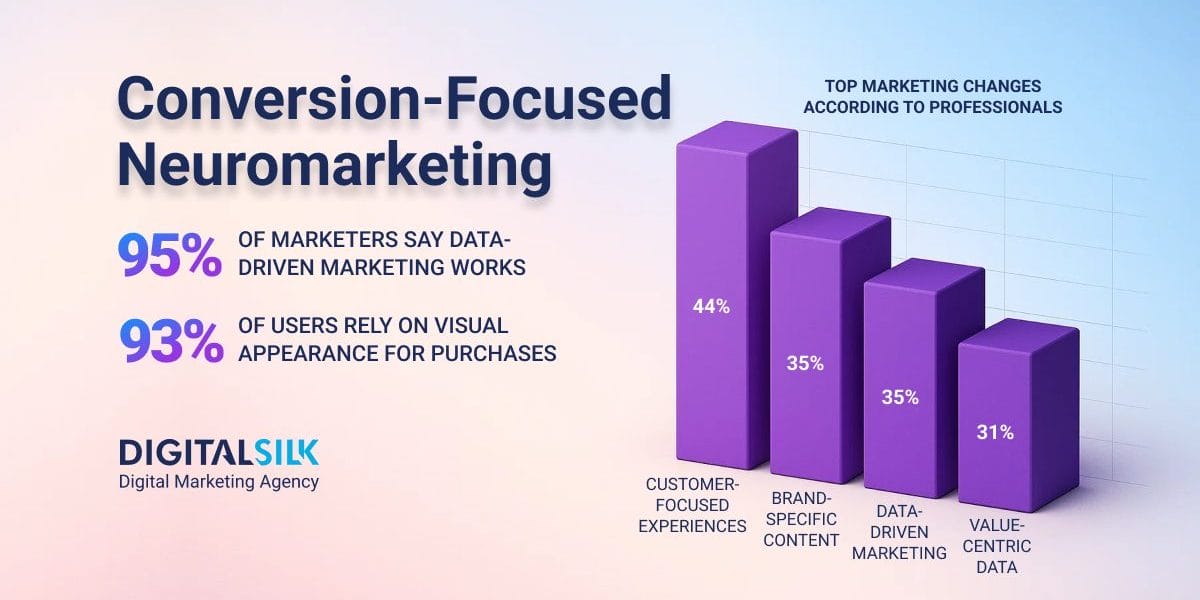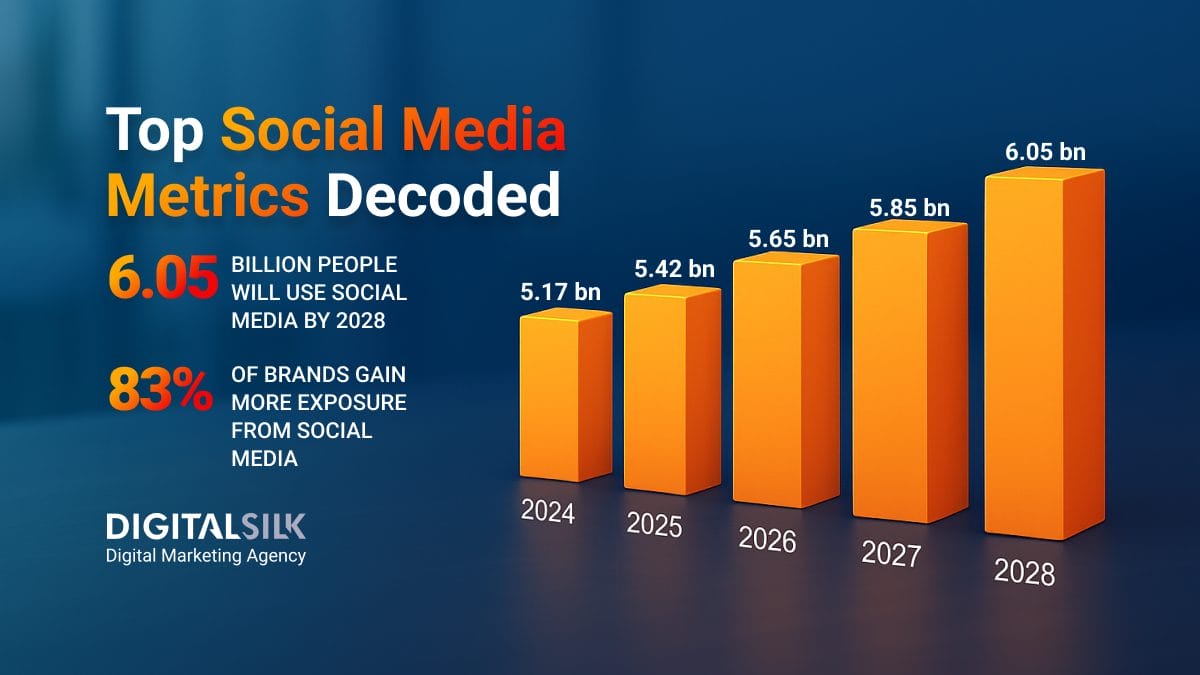Neuromarketing: Key Highlights
-
Odd-number framing: Headlines and lists with three, five or seven items feel more novel and are easier for the brain to scan and remember.
-
Action-charged language: Use action-oriented verbs and specific benefit lines to propel attention forward instead of making readers decode abstractions.
-
Social proof with substance: Show recognizable logos, credible ratings or real usage signals that make choosing you feel safe and widely endorsed.
Enterprises are investing heavily in behavioral insights, yet many still underestimate how much of a customer’s response happens before conscious thought.
With 44% of marketers saying the biggest change in the past year is a focus on the customer and their experience, marketing is increasingly defined by how people feel when they engage, not just what they see or hear.
Neuromarketing reveals what captures attention, builds trust and transforms interest into genuine connection, helping brands design experiences that truly resonate.
Deutsche Welle supports this, emphasizing that much of a customer’s response happens before conscious thought, showcasing the importance of subconscious influences in driving consumer behavior.
Below, you’ll find 15 neuromarketing tips that can help you connect with audiences on a deeper level and improve conversion performance.
15 Neuromarketing Techniques To Maximize Conversions
Neuromarketing is the study of how the brain responds to marketing stimuli, revealing the subconscious factors that shape perception and influence behavior.
But knowing the neuromarketing definition isn’t enough to influence real behavior or improve how people experience your brand.
While 95% of marketers say data-driven strategies are successful, few connect that data to how the brain interprets information, emotion and choice.
The following techniques bring science and strategy together to help you apply proven psychological triggers that turn initial interest into conversion:
1. Use Odd Numbers In Headings
Numbers help readers process information quickly and bring order to complex ideas, but even numbers tend to feel complete and predictable.
The human brain naturally looks for patterns and balance and when it finds an even number, it senses closure and moves on.
Odd numbers, on the other hand, create a small cognitive gap that keeps the brain engaged for longer as it looks for that familiar balance.
This subtle psychological effect makes content with odd numbers more memorable and instinctively more interesting to the reader.
As 83% of marketers say content marketing drives the most demand, using number psychology can directly influence how your message is received.
You can apply this in practice by using the following strategies:
- Add two numbers to your headline to make it feel more organized and purposeful, such as “5 Metrics That Define 2026 Growth and 3 You Might Overlook.”
- Use odd numbers in titles and subheads to make your content feel more distinctive and keep readers interested longer.
- Spell out smaller numbers like “three” or “seven” to create smoother visual flow and make the text easier to read.
- Align your number choice with intent by using 3 or 5 for concise insights and 7 or 11 for deeper, more detailed perspectives.
Among neuromarketing examples that show how subtle cues guide attention, Allrecipes uses its blog post “7 Easy 3-Ingredient Breakfasts for Fast Morning Meals” to capture interest through the use of two odd numbers.

The combination of 7 and 3 creates a natural sense of variety and simplicity that draws readers in before they even process the full headline.
2. Apply Color Psychology
Color sparks emotion before logic has a chance to step in, guiding how people interpret value, trust and relevance in a single glance.
With 93% of consumers basing their decisions on visual appearance and 85% driven primarily by color, your palette choices carry more weight than any headline or tagline.
When used with intention, color becomes one of the most effective neuromarketing tools for influencing perception and driving engagement.
Ways to put this strategy into action include:
- Select colors that evoke the right emotion such as blue for trust, green for health, red for energy, yellow for optimism
,or black for sophistication. - Keep your color palette consistent across all channels so your audience instantly recognizes your brand wherever it appears.
- Test color variations in high-impact areas like call-to-action buttons or banners to see how they influence behavior.
- Adapt color choices to different markets and cultures since color meanings shift depending on audience context.
- Use contrast with intent to draw attention to key messages without overwhelming the visual experience.
Few brands demonstrate color psychology as clearly as McDonald’s. Its use of bright yellow and bold red evokes warmth, energy and enthusiasm that capture attention almost instantly.
Yellow conveys optimism and friendliness, while red sparks excitement and urgency, creating a visual identity that feels both familiar and irresistible.
3. Use Active Verbs And Power Words
Every sentence either pulls the reader in or lets their attention slip away.
With 33% of marketers saying their biggest challenge is creating high-quality content, it’s clear that language plays a bigger role than format or frequency.
Active verbs show direction and capture intent, while power words add emotion that makes writing more engaging and persuasive.
Together, they turn information into something readers want to engage with and remember.
Some of the ways you can use this strategy include:
- Begin sentences with active verbs like build, create, inspire
,or transform to give your message momentum. - Remove filler and hesitation words that make your message feel less certain or clear.
- Incorporate emotionally charged words that help readers connect with your ideas on a more instinctive level, such as trusted, proven, unforgettable, delight, energize, inspire, reassure or celebrate.
- Use precise, active language in headlines and calls-to-action (CTAs) to make every action feel deliberate and compelling.
- Review your writing for tone and flow so it reads naturally and keeps the reader engaged.
Ahrefs provides one of the most practical neuromarketing examples of how language drives engagement.
On its Free Keyword Generator page, verbs like “Find” and “See” spark instant action and curiosity, encouraging users to explore without overthinking.

These active cues turn a simple interface into an experience that feels direct, helpful and rewarding from the very first click.
4. Leverage Herd Behavior
People like to think of their decisions as independent, but much of human behavior follows social cues.
We look to others for validation, especially when faced with uncertainty or too many options.
This instinct to align with the crowd is what drives herd behavior and it’s one of the most powerful psychological triggers in marketing.
Here are a few practical ways to apply this strategy in your content:
- Show visible indicators of popularity such as “100,000+ downloads already” or “Over 1 million active users.”
- Highlight participation metrics like “With 300k subscribers and 4 million readers, we continue to grow.”
- Use credibility cues in headlines or banners such as “Rated 4.8/5 stars by thousands of users.”
- Reinforce the feeling of belonging by using collective language like join, discover with others or trusted by professionals worldwide.
- Feature milestones or community achievements that reflect momentum and shared engagement.
Zoom uses neuromarketing in web design by applying herd behavior to showcase widespread trust and credibility right on its homepage.
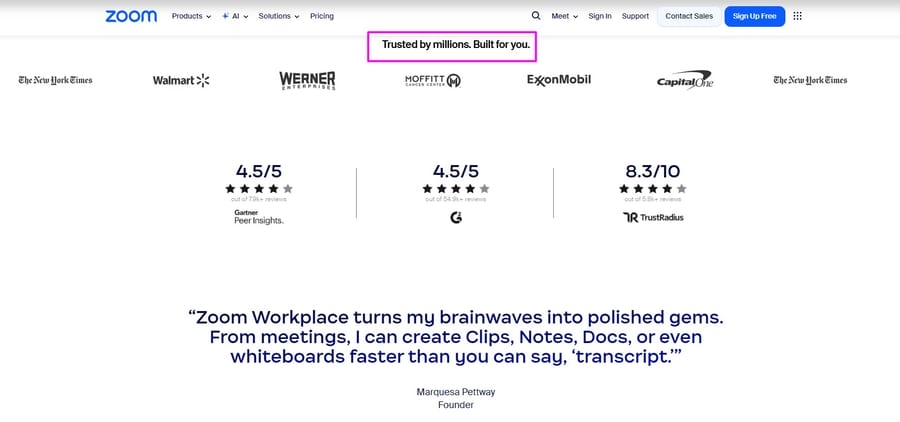
The section featuring well-known brands like Capital One, Walmart, and The New York Times, paired with high ratings from platforms such as Gartner and G2, instantly signals reliability through association.
Phrases like “Trusted by millions” reinforce the idea that choosing Zoom aligns with what respected companies and countless users already trust, making the decision feel validated before any demo or trial begins.
5. Offer Instant Benefits
People are naturally drawn to immediate rewards because the brain values instant gratification over long-term gain.
When something feels attainable in the moment, it activates a sense of satisfaction that makes engagement feel effortless.
That’s why 90% of customers are more willing to interact with a brand that provides a clear benefit or incentive upfront.
Whether it’s a free resource, exclusive access, or a small reward, immediacy swaps passive interest for active participation.
Ways you can apply this strategy effectively include:
- Offer something valuable at first interaction such as a free tool, resource or insight that helps users achieve something quickly.
- Make the benefit obvious from the start so users immediately see what they gain without searching for details.
- Provide short-term rewards or bonuses that encourage participation while keeping the experience natural and useful.
- Use phrasing that conveys instant value, like “start using today” or “get immediate access” to make the offer feel tangible.
- Ensure the reward connects to your core offering so it builds relevance and strengthens long-term engagement.
For example, Benefit Cosmetics uses instant benefits to spark immediate engagement by offering shoppers 30% off their essentials when they enter a specific code.
The offer delivers clear value upfront, rewarding users for taking action in the moment, turning a simple social post into a direct and gratifying brand interaction.
6. Apply The Scarcity Principle
Scarcity influences how people perceive value by making limited opportunities feel more important.
When an offer appears available for only a short time or in small quantities, it triggers a natural desire to act before it’s gone.
This instinct can naturally increase engagement and brands that learn neuromarketing techniques around scarcity understand it works best when it feels genuine, creating motivation while preserving trust.
Here are some practical ways to apply scarcity and urgency in your marketing:
- Limit availability by quantity or time to create authentic anticipation, such as offering a product to the first 100 customers or for a single weekend.
- Highlight exclusive access or editions to give customers the feeling of being part of something rare.
- Use clear, time-bound messaging like “Available until midnight” or “Only a few left” to make the limitation unmistakable.
- Add pre-order or reservation options that allow customers to secure their spot before a launch.
- Be transparent about restrictions so each offer feels credible and builds long-term confidence in your brand.
For instance, Booking applies scarcity and urgency techniques by showing real-time availability, such as “Only 5 left at this price,” to make offers feel more immediate and valuable.

This approach highlights limited access and encourages users to act while the opportunity is still open.
Combined with visible ratings and clear discounts, it reinforces the perception that the best options are in high demand.
7. Spark Intrigue And Curiosity
Curiosity drives people to explore, discover and understand.
It thrives on questions that aren’t fully answered and ideas that hint at something more.
In neuromarketing, intrigue works by giving audiences just enough information to draw them in while leaving space for discovery.
When executed properly, it keeps people engaged, encourages interaction and builds anticipation for what comes next.
Below, you can find a few strategies to introduce the scarcity principle:
- Create open loops in your messaging by suggesting insights or outcomes that will be revealed later.
- Use teaser-style headlines or visuals that raise questions and invite exploration.
- Frame content as a gradual reveal so the audience feels they are uncovering something with each step.
- Encourage interaction through storytelling that rewards continued attention with new details or perspectives.
- Ensure curiosity leads to substance by delivering genuine insight or value once the audience engages.
For example, Starbucks builds anticipation for its holiday drinks by offering a small glimpse instead of a full reveal.
The post invites speculation in the comments, turning anticipation into conversation as fans ask which drinks and treats are returning.
8. Try The Anchoring Effect
According to neuromarketing research, the first number or offer they see becomes an unconscious reference point that shapes every comparison after it.
Whether it’s a premium plan placed before a standard one or a higher price shown before a discount, that initial “anchor” frames how value is perceived.
The most effective anchors shape how people define value, directing their attention toward options that feel balanced and worth choosing.
Follow these strategies to use the anchoring effect in marketing:
- Lead with a premium option so other choices appear more accessible in comparison.
- Show clear price contrasts with strikethroughs or side-by-side offers to make savings tangible.
- Bundle products strategically so the combined value outweighs individual costs.
- Highlight mid-tier options as “most popular” to make them the natural compromise between extremes.
- Keep your anchor consistent across channels, so customers form a stable perception of your value.
Apple is one of the clearest neuromarketing examples of anchoring at work.
By introducing a premium model first, the company establishes a reference point that shapes how customers perceive every other option.
The higher-priced version makes mid-range models feel more accessible, guiding buyers toward choices that appear both smart and rewarding.
9. Cross-Sell And Upsell Smartly
Every purchase is an opportunity to deepen engagement and create more value for the customer.
When interest is already established, people are naturally more open to exploring products or services that enhance their initial choice.
A skilled neuromarketing agency recognizes this moment as one of alignment, where the right suggestion can feel like service rather than sales.
With the right timing and relevance, cross-selling and upselling can transform a single transaction into a lasting connection.
Here’s how you can start using this strategy:
- Pair related products or services that genuinely improve the customer’s purchase or experience.
- Use subtle cues like “You may also like” or “Frequently bought together” to encourage natural exploration.
- Introduce upgrades contextually after interest is established, not before.
- Highlight the added value clearly so customers see improvement, not pressure.
- Refine recommendations over time using customer behavior insights to make every suggestion feel relevant and personal.
For example, LinkedIn uses cross-selling by tapping into professional curiosity at the right moment.
After showing users how often their profile appeared, it offers Premium access to see who viewed them and where they showed up.
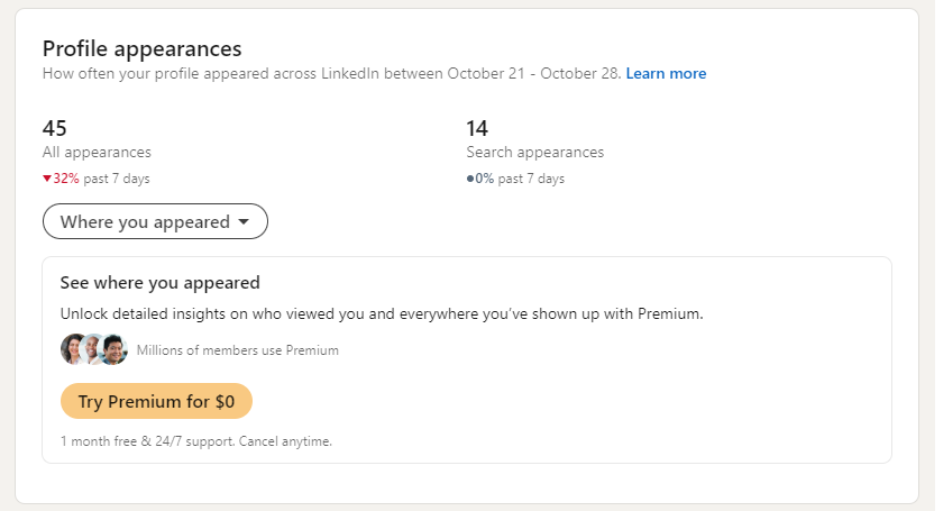
The prompt feels like a continuation of the experience, encouraging users to explore more without disrupting their flow.
10. Tap Into User Emotions
Emotion shapes how audiences connect, remember and decide, giving every interaction a human dimension that logic alone can’t achieve.
76% of consumers prefer to buy from brands they feel connected to, while 57% of them are willing to pay more for that connection.
When emotion guides the story, it builds loyalty rooted in feeling rather than habit.
Use these steps to prioritize emotional storytelling in your marketing:
- Build stories around transformation that show real change and human impact.
- Highlight authentic moments behind the brand to make your message more relatable.
- Use visual storytelling that mirrors genuine feelings rather than perfection.
- Pair data with narrative so information is felt as much as it’s understood.
- Write with empathy so people feel recognized and valued, not spoken at.
For example, Patagonia connects emotion with purpose by centering its brand on shared values rather than products.
Every campaign reinforces a commitment to the planet, from urging customers to repair rather than replace gear to donating profits to environmental causes.
11. Eye Tracking And Visual Hierarchy
Every visual element in a campaign has to earn its place because the human eye is selective about where it lands.
Faces, movement, and contrast all influence what people notice first and how they interpret what follows.
Neuromarketing in web design and advertising reveals that the path the eye takes is rarely random, as it follows subtle cues that shape emotion and understanding before the viewer even realizes it.
You can apply these strategies to maximize your marketing results:
- Position key visuals and messages where the eye naturally lands first to make an immediate impression.
- Use gaze and directional cues in imagery to lead attention toward your main content or call to action.
- Balance contrast and whitespace so important information stands out without overwhelming the viewer.
- Test creative variations with heat maps or attention-tracking tools to learn how people view your content.
- Design with flow in mind by arranging elements in a way that visually tells a story from start to finish.
For instance, Lowe’s applies eye-tracking and behavioral mapping to understand how shoppers move through its stores after seeing ads.
By analyzing where customers focus, how they navigate displays and which visuals they remember, the company refines both its creative and in-store strategy.
This approach connects advertising with real behavior, ensuring every visual cue supports attention and recall at the moment of purchase.
12. Use Flattery And The Cheerleader Effect
Flattery captures attention because it mirrors the audience’s own identity and aspirations.
When a message feels personal through the use of familiar language, experiences or traits, the brain recognizes it as directed specifically at the reader.
For instance, Class Creator uses flattery through recognition and scale, highlighting the impact educators have made with their platform.
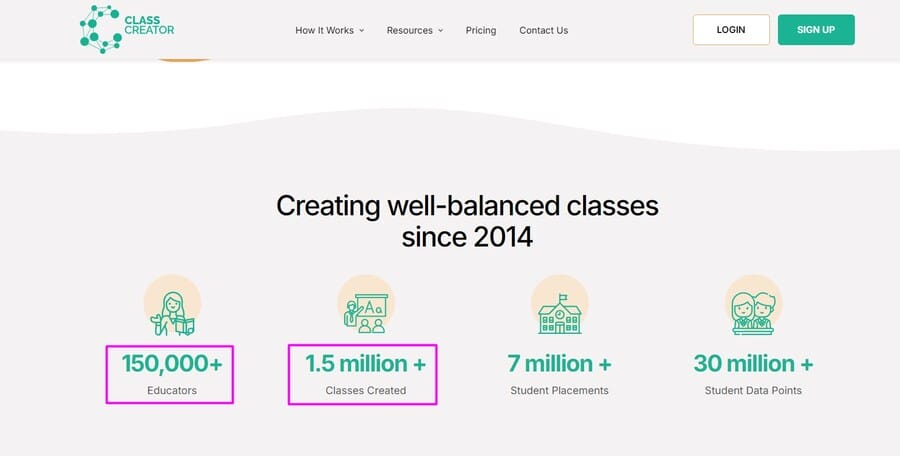
The cheerleader effect builds on that recognition by showing that others with similar qualities already admire or trust the brand.
Almost 95% of people consult online reviews before making a buying decision, revealing how personal relevance and social approval combine to influence choice.
When used together, flattery and group validation create an experience that feels both personal and affirming.
Here’s how you can start using both strategies for marketing:
- Use personalized praise that highlights the customer’s smart choice in selecting your brand or product.
- Show clusters of testimonials or reviews together to create a shared feeling of approval and trust.
- Feature user-generated content that highlights authentic experiences and celebrates your audience’s contribution.
- Use community-driven language that connects personal recognition with collective appreciation.
- Reinforce appreciation through follow-ups and thank-you messages to maintain connection beyond the purchase.
13. Reinforce Across All Touchpoints
Attention bias means that people don’t remember brands because of a single interaction but because of repeated, consistent exposure over time.
Every encounter, from an ad to a social post to a customer email, builds brand recognition that influences it’s recalled in the future.
When these interactions share the same tone, timing and intent, they create a seamless experience that feels familiar and trustworthy.
The goal is to make each touchpoint work together as part of a larger conversation that keeps the brand present in people’s minds.
To use attention bias in your marketing, follow these strategies:
- Keep tone and visuals consistent so every interaction contributes to the same identity.
- Stay visible across multiple channels to keep your brand within the audience’s daily awareness.
- Repurpose effective content in different formats to reinforce key messages without fatigue.
- Coordinate messaging across platforms so customers experience one coherent story.
- Follow up at meaningful moments to convert familiarity into engagement or action.
Duolingo is a good example of how consistent reinforcement keeps a brand present in everyday life.
Its reminders, social posts and emails all carry the same playful personality, creating instant recognition across every channel.
The brand also stays relevant by joining pop culture conversations in real time, making its tone feel current and human.
14. Follow The Common Enemy Strategy
A shared challenge gives your audience something to believe in and your brand a purpose that feels human and relevant.
Nowadays, audiences respond to campaigns that take a stand against issues that harm progress or balance, whether it’s stress, waste, misinformation or disconnection.
When that opposition feels authentic, it builds loyalty rooted in shared values rather than simple preference.
Some steps you can take to create a “common enemy” with your audience are:
- Identify a real challenge your audience faces and position your brand as part of the solution.
- Align your messaging around shared values that reflect what matters to your customers.
- Use storytelling to show real progress against the problem to make the mission more tangible.
- Encourage participation and community input so customers feel involved in the change.
- Stay consistent in your actions and message to reinforce credibility over time.
For example, Ben & Jerry’s often uses its platform to address social and environmental issues that extend far beyond ice cream.
The brand calls attention to how climate change disproportionately affects certain communities, turning awareness into action and inviting its audience to stand together against inequality.
This approach keeps its values at the center of every message, showing that business can drive awareness and change while staying true to its purpose.
15. Try Out The Principle Of Reciprocity
Reciprocity influences user behavior because people naturally seek balance in exchanges.
When a brand offers something thoughtful and useful upfront, like a resource, free trial, or personalized tip, it creates a natural urge to respond with engagement or loyalty.
A skilled neuromarketing agency understands that this approach works best when it feels genuine and proportionate, not transactional.
To try this out for yourself, focus on these key areas:
- Offer something genuinely useful such as practical tools, insights, or exclusive access that help your audience achieve their goals.
- Personalize what you give so it feels relevant to the individual’s interests or needs.
- Show appreciation for engagement through thoughtful follow-ups, rewards, or thank-you gestures.
- Keep generosity consistent so it becomes a recognizable part of your brand experience.
Digital Silk’s Neuro-Impact Framework
Building a neuromarketing-driven program starts with understanding how the brain processes attention, emotion and decision-making.
This framework translates cognitive science into actionable marketing steps that shape perception, build trust and drive measurable results:
- Step 1. Attention-trigger: Define what captures the audience’s focus first, using visual design, compelling copy or motion cues.
- Step 2. Emotional activation: Use storytelling, design, and social proof to create emotion and strengthen audience connection.
- Step 3. Trust and memory anchor: Reinforce credibility and familiarity with consistent signals that keep the brand top of mind.
- Step 4. Conversion cue: Apply psychological triggers such as anchoring, urgency and reciprocity to prompt action.
- Step 5: Test and iterate: Refine the program using neuromarketing metrics like attention, excitement and recall alongside behavioral KPIs such as click-through and conversion rates.
Below is a visual overview of the neuro-impact framework in action:

Why Enterprise Organizations Choose This Model
It connects brain science with marketing operations and analytics, reducing risk and creating a roadmap that links neuroscience insight to customer behavior and ROI.
The Ethical Implications Of Neuromarketing
As neuromarketing becomes more sophisticated, it raises questions that go far beyond metrics and campaign performance.
When marketing starts to tap into subconscious reactions, the line between understanding and intrusion becomes harder to define.
The conversation about ethics includes ensuring that insight doesn’t come at the cost of autonomy and trust:
- Invasion of privacy: Neuromarketing explores cognitive and emotional responses that people don’t always realize they’re revealing. Without clear consent or data boundaries, collecting this kind of information can feel intrusive, blurring the line between insight and surveillance.
- Manipulating unconscious behavior: When brands tap into psychological triggers without transparency, they risk shaping behavior in ways consumers haven’t consciously agreed to. The ethical concern lies in influencing choices that feel instinctive rather than deliberate.
- Lack of research depth: Despite its growing use, neuromarketing still lacks consistent scientific validation. Many claims about brain-based marketing rely on limited studies, leaving room for overinterpretation or misuse of data.
- Importance of consent and transparency: The most responsible applications of neuromarketing come from open communication about how data is gathered and used. Transparency builds credibility and protects the integrity of both the brand and the consumer relationship.
The Future Of Neuromarketing Techniques
The next wave of neuromarketing will likely redefine how brands understand and respond to human emotion in real time.
As technology blends with neuroscience, data will move beyond observation to interpretation, revealing not just what people do, but why they do it.
The potential areas that could potentially be impacted the most include:
- Real-time emotional feedback: Emerging tools could soon allow marketers to track emotional reactions as they happen, adjusting messages or visuals instantly to match the audience’s mood. This shift could make engagement far more adaptive and human-like.
- Advanced personalization: With 88% of marketers saying personalization directly impacts sales, neuromarketing may push it further by using emotional and cognitive data to tailor experiences that respond to how customers feel, not just what they click.
- Neuromarketing meets AI: As 79% of business leaders believe adopting AI is key to competitiveness, combining it with neuromarketing could create predictive systems that learn emotional patterns over time. These insights might help brands anticipate needs before they’re expressed.
- Wearable neuro tools: Devices that measure attention, stress, or focus could soon become part of daily life, giving brands more accurate insight into real-world reactions while raising new ethical considerations around data use.
- Virtual reality applications: VR may transform neuromarketing studies by letting researchers simulate experiences and test authentic responses in immersive environments.
Create Data-Driven Neuromarketing With Digital Silk
Neuromarketing is transforming the way brands connect with people, showing that true influence comes from understanding rather than persuasion.
Brands that combine data with empathy will create experiences that feel natural, personal and genuinely human.
Digital Silk creates user-centric marketing campaigns to help brands translate human behavior into design, content and campaigns that inspire action and build lasting connection.
As a full-service digital marketing agency, we offer:
- Digital marketing campaigns
- Social media marketing
- SEO services
- PPC management
- Complete branding strategies
- Custom web design
Contact our team, call us at (800) 206-9413 or fill in the Request a Quote form below to schedule a consultation.
"*" indicates required fields


